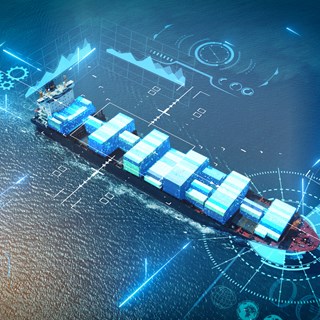
The value of training in virtual reality
We discuss the value of deploying digital visualisation tools in the defence domain to satisfy specific, existing training requirements
The concept of virtual reality (VR) and the potential of the digital domain is widely recognised, mainly as a result of sci-fi movies, other popular culture, high-profile crowdfunded campaigns by Oculus and its subsequent purchase by Facebook for $2bn. However, until recently, the reality has been more prosaic than Hollywood might suggest. With technology beginning to mature, thanks in no small part to the efforts of the video-gaming sector, the defence value chain now has the opportunity to benefit from what VR, augmented reality (AR), and digital visualisation tools can offer.
Faced with the need to deliver high quality, complex training while cutting costs and improving flexibility, governments around the globe are becoming more aware of the value that VR can provide. The take-up pace is expected to increase significantly over the coming years.
We discuss the value of deploying digital visualisation tools in the defence domain to satisfy specific, existing training requirements. We explain the importance of fully understanding the scope of the problem using expertise and experience gathered in practice to deliver a system that is user-friendly, fit for purpose and cost-effective.
Advances in digital technology present us with a range of highly appropriate options for different training tasks. Virtual Reality (VR) delivers the whole immersive experience with a graphical representation of an environment presented by the computer without the need for any ‘real’ elements. Trainees use face-mounted screens such as the ubiquitous Oculus Rift to engage with the computer-generated environment, customising specific training needs.
Augmented Reality (AR) captures the real world by overlaying layers of information using a hand-held device or optical head-mounted display (OHMD) such as Epson Moverio or Microsoft’s new Hololens to provide training in the context of an existing environment. An example of this might be in a ship’s engine room. The overlay automatically includes technical information about existing equipment during planned maintenance without the need to check manuals stored away from the worksite.
Well-designed and human-centred content is key to successful training, whether it is delivered using VR, AR or more traditional methods with information displayed on a computer screen. If the training objectives are not apparent in the first place, and the content does not reflect them, using VR will detract from the experience rather than enhance it. The visualisation of what is being taught must be appropriate for the task.
Different levels of immersion are required depending on the importance of developing spatial awareness of the specific environment. There is no need for high-resolution graphics for a simple task, while full VR simulation must be realistic enough for the trainee to engage with the process as they would if carrying out a job for real.
Despite common misconceptions, VR and AR need not be expensive. The gaming industry has developed much of the hardware, spreading development costs and making the equipment remarkably accessible by exploiting commercial of the shelf technology (COTS). There is a place for motion simulation platforms. Some complete motion simulation platforms that are in use in defence training are costly to operate because they require infrastructure, maintenance and support from a team of engineers and a management and governance overhead.
Still, VR and AR can deliver thorough, cost-effective training so that the training pipeline is shortened and trainees have an appropriately high level of knowledge and experience before they sharpen their skills on the more expensive training simulations or in a live scenario. For example, providing laptops and Oculus Rifts as part of familiarisation training before joining a new ship has vast benefits.
To deliver successful VR and AR requires a mix of engineers and human factors specialists who understand the technical documentation and intricacies of the training domain and software engineers who can translate the requirements into high-quality immersive, engaging content in the digital domain.

Chloe Yarrien
Chloe Yarrien discusses how Maritime Autonomous Systems (MAS) are not capable of solving every problem and meeting every need simultaneously, but they can be very useful and effective for certain tasks and applications.

N/A
We have recently attended the IMarEST Engine as a Weapon event where we delivered industry-leading talks on a range of topics, from Autonomous Vessels to Digital Twin in Ship Design.

Leigh Storer
This paper, available as a download, looks at the intricacies of trust within the public sector and presents BMT’s four key enablers to building trust in the public sectors’ transformation initiatives.

Kathryn Walker
Whether we like it or not, the world is facing a growing number of wicked problems – problems where there is no obvious route to resolution, and no agreement on the core challenges. With the incredible advances now seen in AI, to what extent can computer generated input support in ‘solving’ wicked problems?